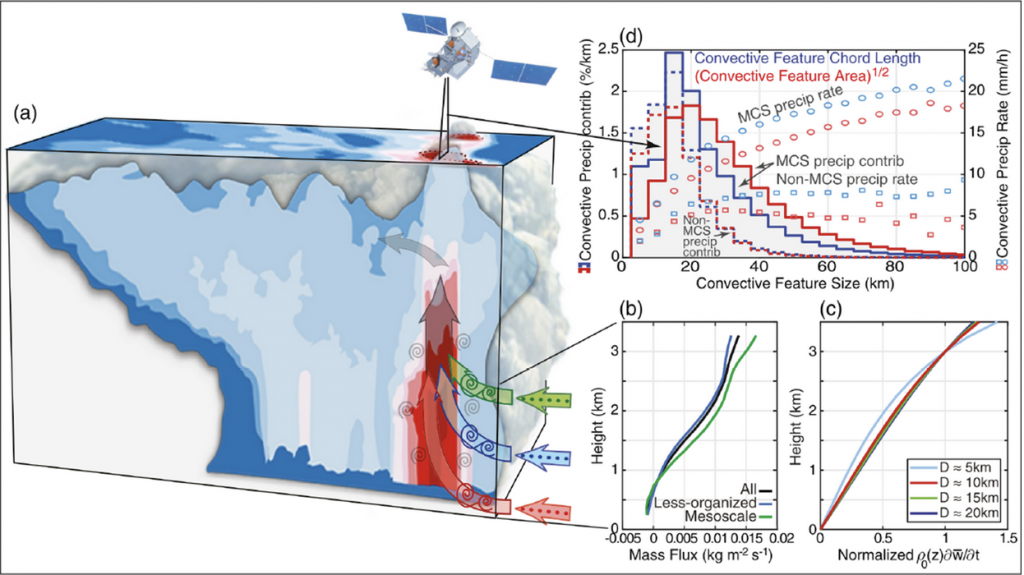
Figure from Kuo and Neelin (2022 GRL); panel (b) adapted from Schiro et al. (2018, PNAS).
•Deep inflow: environmental air enters the updrafts through a deep layer (up to ~4 km), whether by coherent flow (dynamic entrainment), smaller-scale turbulent entrainment or a combination of both.
•Convective mass flux (upward motion in the convective updrafts) thus tends to increase with height through the lower troposphere.
•This is widely observed — as in panel (b) (see also references in Schiro et al. 2018)— and can also be inferred by big data methods (see Precipitation-buoyancy relations, Ahmed and Neelin 2018)
•Dynamic entrainment arguments based on the anelastic equation explains why this deep inflow is common:
•Non local dynamics tends to spread the response to buoyancy in the vertical, yielding deep inflow when the horizontal scale of convection becomes comparable to the vertical scale between buoyancy and surface
•such horizontal scales are also common in strong convection (see panel d)
•Implies even broad, deep convection cannot avoid entraining environmental air. Needs high LFT moisture to become intense. Mechanisms that maintain this moisture can then feedback to strengthen storms.
Related Research:
